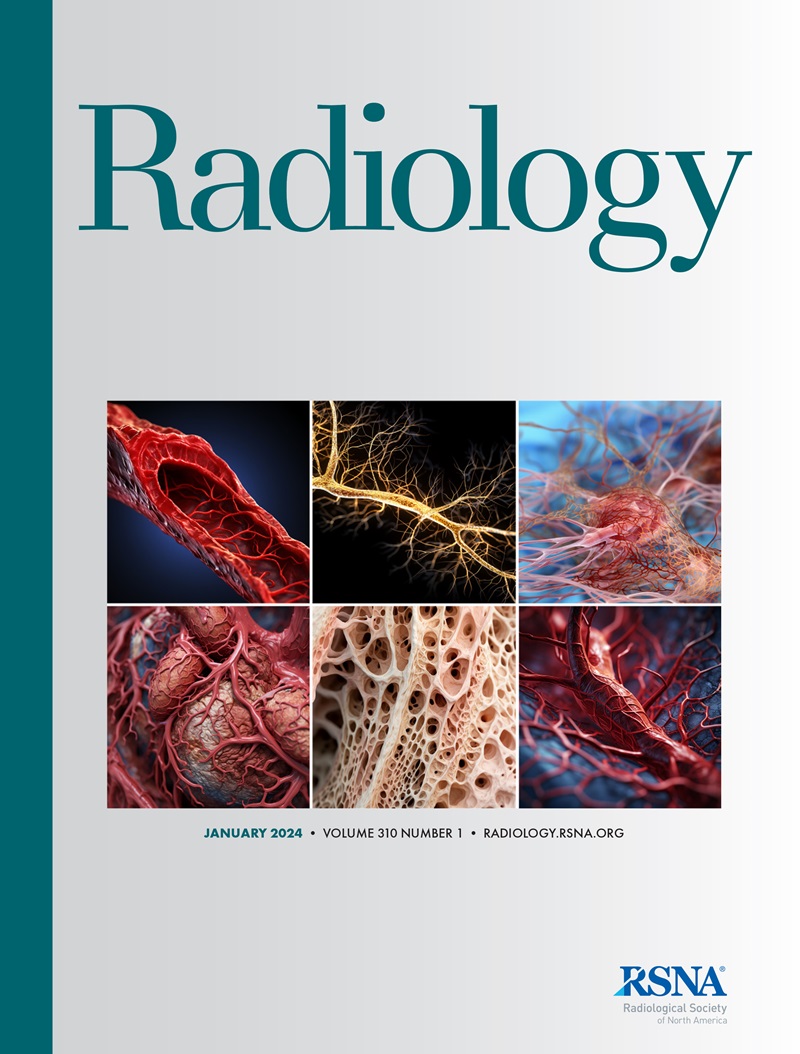Tugba Akinci D'Antonoli, Lucas K Berger, Ashraya K Indrakanti, Nathan Vishwanathan, Jakob Weiss, Matthias Jung, Zeynep Berkarda, Alexander Rau, Marco Reisert, Thomas Küstner, Alexandra Walter, Elmar M Merkle, Daniel T Boll, Hanns-Christian Breit, Andrew Phillip Nicoli, Martin Segeroth, Joshy Cyriac, Shan Yang, Jakob Wasserthal
求助PDF
{"title":"TotalSegmentator MRI: Robust Sequence-independent Segmentation of Multiple Anatomic Structures in MRI.","authors":"Tugba Akinci D'Antonoli, Lucas K Berger, Ashraya K Indrakanti, Nathan Vishwanathan, Jakob Weiss, Matthias Jung, Zeynep Berkarda, Alexander Rau, Marco Reisert, Thomas Küstner, Alexandra Walter, Elmar M Merkle, Daniel T Boll, Hanns-Christian Breit, Andrew Phillip Nicoli, Martin Segeroth, Joshy Cyriac, Shan Yang, Jakob Wasserthal","doi":"10.1148/radiol.241613","DOIUrl":null,"url":null,"abstract":"<p><p>Background Since the introduction of TotalSegmentator CT, there has been demand for a similar robust automated MRI segmentation tool that can be applied across all MRI sequences and anatomic structures. Purpose To develop and evaluate an automated MRI segmentation model for robust segmentation of major anatomic structures independent of MRI sequence. Materials and Methods In this retrospective study, an nnU-Net model (TotalSegmentator MRI) was trained on MRI and CT scans to segment 80 anatomic structures relevant for use cases such as organ volumetry, disease characterization, surgical planning, and opportunistic screening. Images were randomly sampled from routine clinical studies to represent real-world examples. Dice scores were calculated between the predicted segmentations and expert radiologist segmentations to evaluate model performance on an internal test set and two external test sets and against two publicly available models and TotalSegmentator CT. The Wilcoxon signed rank test was used to compare model performance. The proposed model was applied to a separate internal dataset containing abdominal MRI scans to investigate age-dependent volume changes. Results A total of 1143 scans (616 MRI, 527 CT; median patient age, 61 years [IQR, 50-72 years]) were split into a training set (<i>n</i> = 1088; CT and MRI) and an internal test set (<i>n</i> = 55; MRI only). The two external test sets (AMOS and CHAOS) contained 20 MRI scans each, and the aging-study dataset contained 8672 abdominal MRI scans (median patient age, 59 years [IQR, 45-70 years]). The proposed model had a Dice score of 0.839 for the 80 anatomic structures in the internal test set and outperformed two other models (Dice score of 0.862 vs 0.759 for 40 anatomic structures and 0.838 vs 0.560 for 13 anatomic structures; <i>P</i> < .001 for both). On the TotalSegmentator CT test set (89 CT scans), the performance of the proposed model almost matched that of TotalSegmentator CT (Dice score, 0.966 vs 0.970; <i>P</i> < .001). The aging study demonstrated a strong correlation between age and organ volume (eg, age and liver volume: ρ = -0.096; <i>P</i> < .0001). Conclusion The proposed open-source, easy-to-use model allows for automatic, robust segmentation of 80 structures, extending the capabilities of TotalSegmentator to MRI scans from any MRI sequence. The ready-to-use online tool is available at <i>https://totalsegmentator.com</i>; the model, at <i>https://github.com/wasserth/TotalSegmentator</i>; and the dataset, at <i>http://zenodo.org/records/14710732</i>. © RSNA, 2025 <i>Supplemental material is available for this article.</i> See also the editorial by Kitamura in this issue.</p>","PeriodicalId":20896,"journal":{"name":"Radiology","volume":"314 2","pages":"e241613"},"PeriodicalIF":12.1000,"publicationDate":"2025-02-01","publicationTypes":"Journal Article","fieldsOfStudy":null,"isOpenAccess":false,"openAccessPdf":"","citationCount":"0","resultStr":null,"platform":"Semanticscholar","paperid":null,"PeriodicalName":"Radiology","FirstCategoryId":"3","ListUrlMain":"https://doi.org/10.1148/radiol.241613","RegionNum":1,"RegionCategory":"医学","ArticlePicture":[],"TitleCN":null,"AbstractTextCN":null,"PMCID":null,"EPubDate":"","PubModel":"","JCR":"Q1","JCRName":"RADIOLOGY, NUCLEAR MEDICINE & MEDICAL IMAGING","Score":null,"Total":0}
引用次数: 0
引用
批量引用
TotalSegmentator MRI: Robust Sequence-independent Segmentation of Multiple Anatomic Structures in MRI.
Background Since the introduction of TotalSegmentator CT, there has been demand for a similar robust automated MRI segmentation tool that can be applied across all MRI sequences and anatomic structures. Purpose To develop and evaluate an automated MRI segmentation model for robust segmentation of major anatomic structures independent of MRI sequence. Materials and Methods In this retrospective study, an nnU-Net model (TotalSegmentator MRI) was trained on MRI and CT scans to segment 80 anatomic structures relevant for use cases such as organ volumetry, disease characterization, surgical planning, and opportunistic screening. Images were randomly sampled from routine clinical studies to represent real-world examples. Dice scores were calculated between the predicted segmentations and expert radiologist segmentations to evaluate model performance on an internal test set and two external test sets and against two publicly available models and TotalSegmentator CT. The Wilcoxon signed rank test was used to compare model performance. The proposed model was applied to a separate internal dataset containing abdominal MRI scans to investigate age-dependent volume changes. Results A total of 1143 scans (616 MRI, 527 CT; median patient age, 61 years [IQR, 50-72 years]) were split into a training set (n = 1088; CT and MRI) and an internal test set (n = 55; MRI only). The two external test sets (AMOS and CHAOS) contained 20 MRI scans each, and the aging-study dataset contained 8672 abdominal MRI scans (median patient age, 59 years [IQR, 45-70 years]). The proposed model had a Dice score of 0.839 for the 80 anatomic structures in the internal test set and outperformed two other models (Dice score of 0.862 vs 0.759 for 40 anatomic structures and 0.838 vs 0.560 for 13 anatomic structures; P < .001 for both). On the TotalSegmentator CT test set (89 CT scans), the performance of the proposed model almost matched that of TotalSegmentator CT (Dice score, 0.966 vs 0.970; P < .001). The aging study demonstrated a strong correlation between age and organ volume (eg, age and liver volume: ρ = -0.096; P < .0001). Conclusion The proposed open-source, easy-to-use model allows for automatic, robust segmentation of 80 structures, extending the capabilities of TotalSegmentator to MRI scans from any MRI sequence. The ready-to-use online tool is available at https://totalsegmentator.com ; the model, at https://github.com/wasserth/TotalSegmentator ; and the dataset, at http://zenodo.org/records/14710732 . © RSNA, 2025 Supplemental material is available for this article. See also the editorial by Kitamura in this issue.


